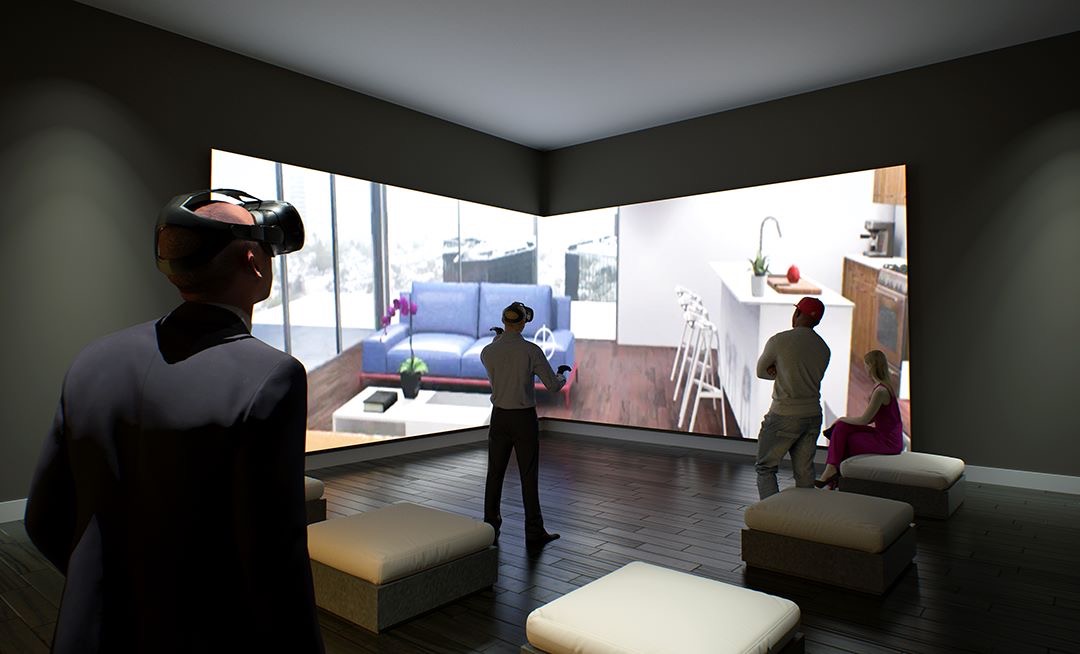Immersive Technologies Create Connections

When was the last time you heard a vlogger or influencer say, “Document it” or “Tell your story”? There are likely examples of this in your various social feeds right now and we see brands taking advantage of this strategy every day to successfully drive sales. Storytelling is the current buzz in building brands and immersive technology will deepen its importance, supporting more meaningful engagement and emotional connection between businesses and consumers.
As we come up upon the Big Game, I’m reminded of a powerful story. An immersive connection was created for millions watching the Hyundai Superbowl commercial created by VRLive back in 2017. Hyundai sent 360º video cameras and projection to a military base in Poland creating the unique opportunity for soldiers to watch the big game with their family members who were actually attending in the US. https://vimeo.com/216714971. They also produced the ad during the game and had it approved for airing by halftime. Many would’ve balked at the idea of coordinating this global effort with several major brands in just a couple of hours. This is an impressive example of how nimble this technology can be.
A Better Super Bowl – Case Study from Barney Goldberg on Vimeo.
This campaign for Hyundai was far-reaching and tugged on the heartstrings of Americans watching one of the most expensive time slots for commercials on TV. The value of this campaign was clear. But what happens when the ROI is not so clear? Do we decide that we should stick to traditional methods of storytelling because they’re “easy to execute” or “comfortable for our team”? Can brands just sit back and wait for their audiences to disengage before we change tactics? I believe it’s time for businesses to take the XR leap and, in partnership with innovative agencies, attempt to harness these emerging technologies before their customers demand it.
In the world of architectural development, we strive to bring developers, architects, and designers into the consumer headspace. Consider navigating a brand of residential properties. Buyers need to not only see the value in their investments, but feel a connection to the place they will grow and live with their families. Baby’s first steps will be taken. Children will play in the yard. Family dinners will bond us together. First loves will be won and lost. Epic teenage battles will reach exhausting peaks, and we will ultimately grow as people. This journey can now begin even before a family physically moves in.
Imagine buying a new home and instead of choosing your design options using a few inches of square carpet or granite, you can enter an immersive experience to see and physically manipulate your home layout and finishes. Selections made during this experience are electronically sent into production with the homebuilder. Meanwhile, your 14 year old son can virtually venture upstairs to his new room, close the door, login to his Spotify account, turn up the volume, and design his space in a way that’s sacred to him. After he’s shared his creation on TikTok for peer approval, his list of preferences and selections would be sent to parents before being ordered on Ikea and Amazon using a Prime membership already connected for free and timely delivery. Now just imagine what happens when this teenager grows up to buy his own home. Who will he think of? Who will bond this kid to their brand? It will be the builders who saw the immersive potential and took action to deliver.
This is a single example of how, in the architectural world, we’re working to enhance the buyer journey with XR innovations. Immersive technology is creating more powerful brand connections and with demand and higher expectations from consumers, this is just the beginning. How will you tell your story in an immersive world?



